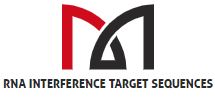The lengthy non‑coding RNA (lncRNA) H19 and microRNA(miR)‑675 have been reported to serve an vital function in the tumorigenesis and metastasis of quite a few most cancers sorts by selling the epithelial‑mesenchymal transition (EMT) course of; nonetheless, the underlying mechanisms of motion of H19 and miR‑675 in cutaneous squamous cell carcinoma (cSCC) stay unknown. The mRNA expression ranges of H19 and miR‑675 have been analyzed utilizing reverse transcription‑quantitative PCR, and Cell Counting Kit‑8, wound therapeutic and Transwell assays have been carried out to research the cell proliferation, migration and invasion of cSCC cells, respectively. The ranges of cell apoptosis have been additionally decided utilizing a TUNEL assay. Protein expression ranges of p53 and marker proteins associated to the EMT course of have been analyzed utilizing western blotting.
In addition, a twin luciferase reporter assay was carried out to find out the interactions between H19, miR‑675 and p53. The outcomes of the current research revealed that the expression ranges of H19 and miR‑675 have been upregulated in cSCC tissues and cSCC cell strains. The knockdown of H19 or miR‑675 expression inhibited cell proliferation, migration and invasion, however induced cell apoptosis. In addition, the expression ranges of EMT‑associated markers have been additionally downregulated.
The overexpression of H19 upregulated the expression ranges of its predicted goal, miR‑675, which subsequently promoted the EMT course of and downregulated the expression ranges of p53. Conversely, the genetic silencing of H19 or miR‑675 inhibited proliferation and invasion in SCL1 and A431 cSCC cell strains. In conclusion, the findings of the current research offered novel perception into the potential function of H19 and miR‑675 in the growth, metastasis and development of cSCC, which can assist the growth of remedies for cSCC.Methamphetamine (MA) is the largest drug menace throughout the globe, with well being results together with neurotoxicity and heart problems.
Recent research have begun to hyperlink microRNAs (miRNAs) to the processes associated to MA use and dependancy. Our research are the first to analyse plasma EVs and their miRNA cargo in people actively utilizing MA (MA-ACT) and management contributors (CTL). In this cohort we additionally assessed the results of tobacco use on plasma EVs. We used vesicle stream cytometry to indicate that the MA-ACT group had an elevated abundance of EV tetraspanin markers (CD9, CD63, CD81), however not pro-coagulant, platelet-, and crimson blood cell-derived EVs.
We additionally discovered that of the 169 plasma EV miRNAs, eight have been of curiosity in MA-ACT based mostly on a number of statistical standards. In people who smoke, we recognized 15 miRNAs of curiosity, two that overlapped with the eight MA-ACT miRNAs. Three of the MA-ACT miRNAs considerably correlated with scientific options of MA use and goal prediction with these miRNAs recognized pathways implicated in MA use, together with heart problems and neuroinflammation. Together our findings point out that MA use regulates EVs and their miRNA cargo, and assist that additional research are warranted to analyze their mechanistic function in dependancy, restoration, and recidivism.

A Comparative Analysis of Reactive Müller Glia Gene Expression After Light Damage and microRNA-Depleted Müller Glia-Focus on microRNAs
Müller glia (MG) are the predominant glia in the neural retina and turn into reactive after harm or in illness. microRNAs (miRNAs) are translational repressors that regulate a spread of processes throughout growth and are required for MG perform. However, no information is offered about the MG miRNAs in reactive gliosis. Therefore, in this research, we aimed to profile miRNAs and mRNAs in reactive MG 7 days after mild injury. Light injury was carried out for Eight h at 10,000 lux; this results in speedy neuronal loss and sturdy MG reactivity. miRNAs have been profiled utilizing the Nanostring platform, gene expression evaluation was performed through microarray. We in contrast the mild injury dataset with the dataset of Dicer deleted MG in order to seek out similarities and variations.
We discovered: (1) The overwhelming majority of MG miRNAs declined in reactive MG 7 days after mild injury. (2) Only 4 miRNAs elevated after mild injury, which included miR-124. (3) The prime 10 genes discovered upregulated in reactive MG after mild injury embody Gfap, Serpina3n, Ednrb and Cxcl10. (4) The miRNA lower in reactive MG 7 days after harm resembles the profile of Dicer-depleted MG after one month. (5) The comparability of each mRNA expression datasets (mild injury and Dicer-cKO) confirmed 1,502 genes have been expressed beneath each circumstances, with Maff , Egr2, Gadd45b, and Atf3 as prime upregulated candidates.
(6) The DIANA-TarBase v.Eight miRNA:RNA interplay instrument confirmed that three miRNAs have been discovered to be current in all networks, i.e., after mild injury, and in the mixed information set; these have been miR-125b-5p, let-7b and let-7c. Taken collectively, outcomes present there’s an overlap of gene regulatory occasions that happen in reactive MG after mild injury (direct injury of neurons) and miRNA-depleted MG (Dicer-cKO), two very completely different paradigms. This means that MG miRNAs play an vital function in a ubiquitous MG stress response and manipulating these miRNAs may very well be a primary step to attenuate gliosis.
[Linking template=”default” type=”products” search=”Anti-Human Angiogenin” header=”1″ limit=”175″ start=”2″ showCatalogNumber=”true” showSize=”true” showSupplier=”true” showPrice=”true” showDescription=”true” showAdditionalInformation=”true” showImage=”true” showSchemaMarkup=”true” imageWidth=”” imageHeight=””]
Colorectal most cancers (CRC) is one of the most aggressive malignancies worldwide. Increasing proof has indicated that microRNA (miR)-599 is concerned in the incidence and growth of differing kinds of tumors, akin to breast most cancers and glioma. However, the function of miR-599 in CRC stays unclear. Thus, the current research aimed to determine the regulatory mechanism of miR-599 in CRC development. Reverse transcription-quantitative PCR was used to research the expression ranges of MCM3AP-AS1, miR-599 and ARPP19, and Cell Counting Kit-8 and Transwell assays have been used to find out the cell proliferation and migration of CRC cells.

